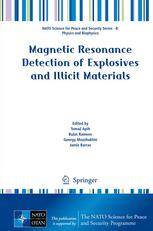

Most ebook files are in PDF format, so you can easily read them using various software such as Foxit Reader or directly on the Google Chrome browser.
Some ebook files are released by publishers in other formats such as .awz, .mobi, .epub, .fb2, etc. You may need to install specific software to read these formats on mobile/PC, such as Calibre.
Please read the tutorial at this link: https://ebookbell.com/faq
We offer FREE conversion to the popular formats you request; however, this may take some time. Therefore, right after payment, please email us, and we will try to provide the service as quickly as possible.
For some exceptional file formats or broken links (if any), please refrain from opening any disputes. Instead, email us first, and we will try to assist within a maximum of 6 hours.
EbookBell Team

4.7
86 reviewsDetection of concealed explosives is a notoriously difficult problem, and many different approaches have been proposed to solve this problem. Nuclear quadrupole resonance (NQR) is unique in many ways. It operates in a safe AM radio frequency range, and it can remotely detect unique “fingerprint” (NQR spectrum) of many explosives, such as TNT or RDX. As such, the detection of target does not depend on the shape or material of the container, or the presence of metallic object such as triggers etc. Spectra of chemically similar compounds differ enough that their presence never causes interference or false alarms. Unfortunately, widespread use is prevented due to low sensitivity, radiofrequency interference from the noisy environment, and inability to detect liquid explosives. This book presents current state of the art of the attempts to overcome NQR sensitivity problem, either by increasing the strengths of signals generated, or by increasing the specificity of the technique through a better understanding of the factors that affect the quadrupolar parameters of specific explosives. The use of these specific quadrupolar parameters is demonstrated on signal processing techniques that can detect weak signals, which are hidden in a noisy background. The problem of differentiation of liquid explosives and benign liquids in closed containers is approached by measurements of different nuclear magnetic resonance (NMR) parameters. As shown, a couple of solutions has reached a prototype stage and could find their use in a near future.